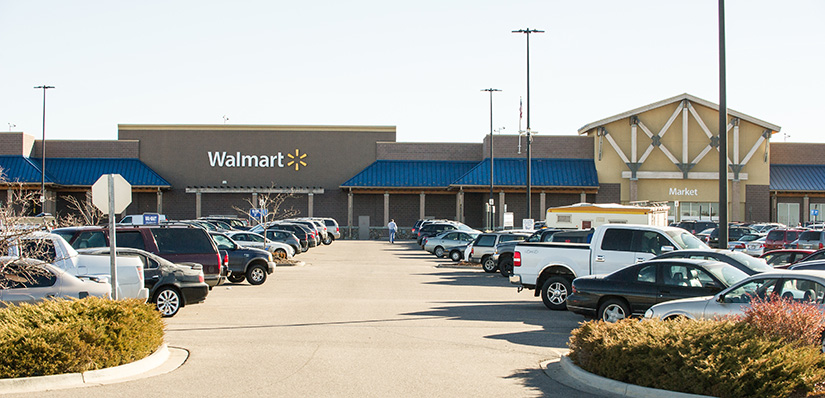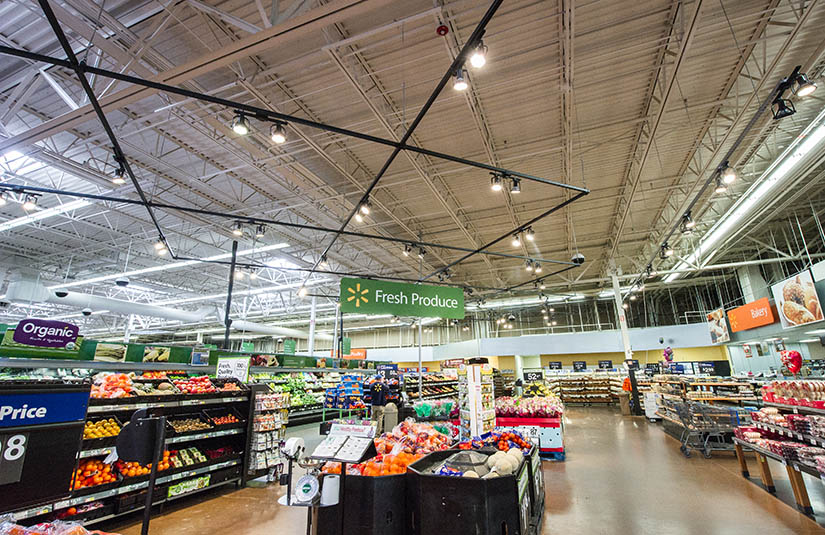After 20 Years, NREL and Walmart Partnership Stays Strong
In late 2003, Walmart approached the National Renewable Energy Laboratory (NREL) with a project whose goal was to discover failures as much as successes. It would spark a now two-decade-and-counting partnership.

According to Jim McClendon, Walmart’s director of Facility Services, when the retail giant launched its sustainability journey, it decided to deploy various clean energy technologies in two test stores. The idea was to see what had the biggest impact on emissions while keeping costs low. Walmart knew it would need third-party testing for the technologies, so it turned to the U.S. Department of Energy’s national laboratories.
“We needed an evaluation of what was successful, what failed, and why,” McClendon said. “In that pursuit, we determined that the most comprehensive, nonbiased process we could undergo would be through the national labs.”
Because one store was in the Dallas, Texas, area, Walmart partnered with Oak Ridge National Laboratory in Tennessee. The other store was in Aurora, Colorado, so Walmart reached out to NREL in Colorado.
Michael Deru, group manager for NREL’s Advanced Building Equipment Research Group and a commercial buildings research engineer, is part of the team working with Walmart. From 2006 to 2008, NREL evaluated more than 20 technologies in the Aurora store. Some of the experiments did not work, and others needed tweaks to improve overall store performance. Another store in Centennial, Colorado, continued testing for another seven years beyond the initial study as NREL continued to collect data and test several additional technologies and control upgrades through 2015.
“In the beginning and as a means to jump-start significant efforts, it was really just throwing everything but the kitchen sink into the store,” Deru said. “From there, it’s turned into a long partnership where we evaluate technologies for them.”
Furthermore, NREL’s strong relationship with Walmart led to the U.S. Department of Energy funding multiple projects with Walmart and other retailers.
In addition to studying clean energy technologies in the stores in Aurora and Centennial, NREL consulted and evaluated changes to stores in Arkansas, Missouri, Nevada, and New Mexico. NREL also hosted several working groups for Walmart as the laboratory continued to perform analysis or field validation work and completed more than a dozen technical reports for Walmart.

One of the technologies NREL tested with Walmart was LED lighting in the produce section. Photo by Dennis Schroeder, NREL
With NREL’s help, Walmart established forward-facing metrics, which allowed the company to do comprehensive energy mapping for its stores.
“NREL is probably the single best entity to perform true verification of analyses in an unbiased way,” McClendon said. “With our large retail footprint, we have numerous suppliers and vendors offering products with sustainability claims. Utilizing a national lab, and NREL specifically, helped fill the gap between the claim and the reality. There are technologies we’ve tested that are now standard in all Walmart stores.”
For example, Walmart recently had a piece of electrical equipment that is a power conditioning device. According to McClendon, the manufacturer made broad claims about its performance, but deploying the technology carries high exposure and high risk. Walmart partnered with NREL and the manufacturer to validate the claims, where NREL simulated an entire store and applied the device.
“It did not perform as expected and did not meet the criteria for moving forward,” McClendon said. “These significant wins on product evaluation help us avoid making a poor business decision.”
“We tested the technology on the NREL campus and in nine stores across the country,” Deru said, “and proved it saves energy—but not enough to justify the cost. That was very valuable for them; they were very happy with the outcome.”
Another successful project focused on skylights. Skylights helped illuminate stores with daylight, but after testing, NREL and Walmart determined that LED lights were more cost effective due to the necessary skylight maintenance throughout its life cycle.
Walmart is happy to keep this relationship going into the future. Currently, as it electrifies, the retailer is looking at locations for new water-source heat pumps, and NREL is helping to determine the right size and temperature of the tanks.
“The level of expertise, the skill sets, obviously NREL is top notch,” McClendon said. “Having access to that—it’s huge. It’s always motivational to work with top caliber folks when you’re solving a problem together.”
Last Updated May 28, 2025
